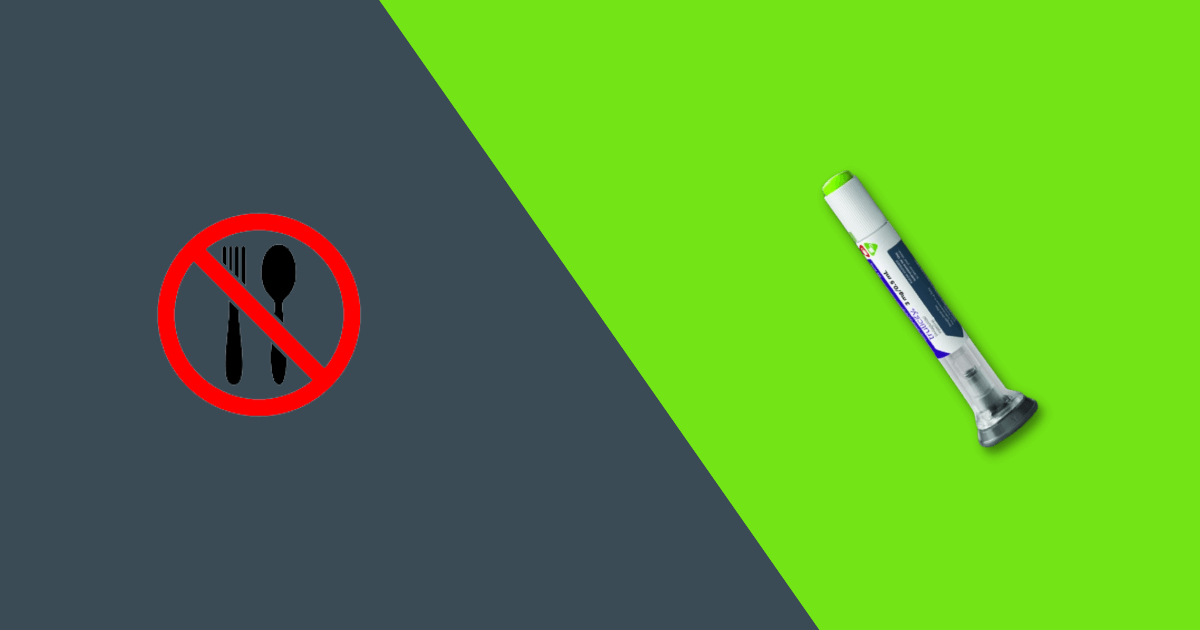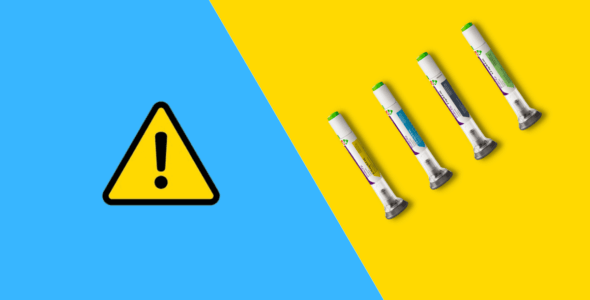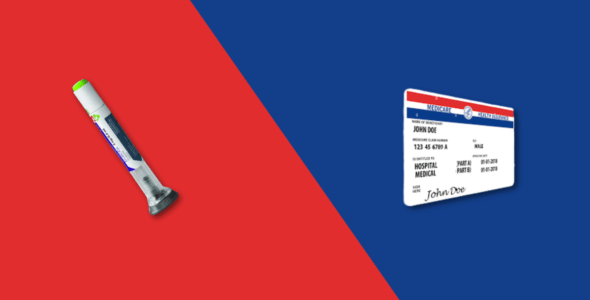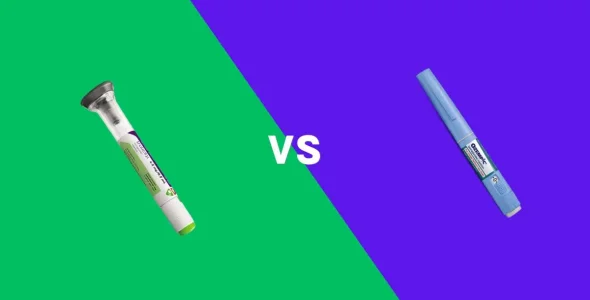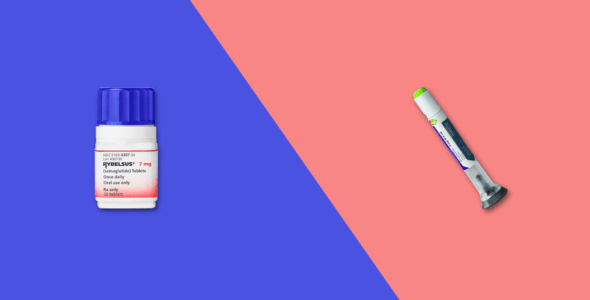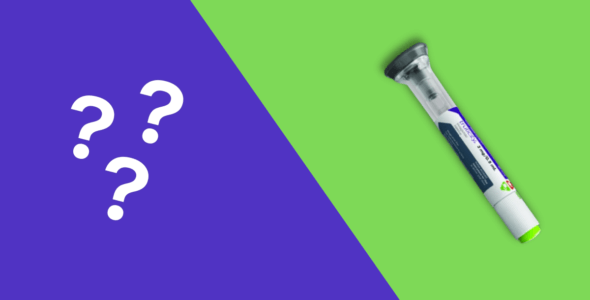Foods to avoid with Trulicity: A diabetes-friendly diet guide
Trulicity helps manage blood sugar, but eating the wrong foods can trigger side effects or reduce effectiveness. Discover which foods to avoid to prevent nausea and other side effects while maximizing results.
Key highlights
- Trulicity is a once-weekly GLP-1 receptor agonist that helps lower blood sugar and reduce cardiovascular risk in people with type 2 diabetes.
- While taking Trulicity, try to avoid or eat less unhealthy foods like fatty meats, fried foods, fast food, processed snacks like cakes, cookies, deli meats, and sugary foods and drinks.
- Blood sugar spikes from sugary or high-carb foods can counteract the benefits of Trulicity. A balanced diet supports better treatment outcomes, improved comfort, and energy levels.
Trulicity (dulaglutide) is a once-weekly subcutaneous injectable GLP-1 agonist that helps control blood sugar levels and reduce cardiovascular risk in adults and children from 10 years of age with type 2 diabetes. Some people may also experience weight loss with it.
Certain foods, especially fatty, spicy, or high-fiber items, can worsen GI side effects like nausea and diarrhea. High-sugar or high-carb foods may also cause rapid blood sugar spikes.
Diet directly affects how the body responds to treatment, manages symptoms, and maintains energy. The right foods can ease side effects, support recovery, and stabilize blood sugar levels.
While taking Trulicity for type 2 diabetes, understanding which foods to limit can enhance its benefits. Learn to make smarter dietary choices for better health.
What is Trulicity?
Trulicity (dulaglutide) is a once-weekly subcutaneous injectable glucagon-like peptide 1 receptor agonist (GLP-1) agonist that helps control blood sugar levels and reduce cardiovascular risk in adults and children from 10 years of age with type 2 diabetes.
Trulicity has the active ingredient dulaglutide. Dulaglutide works by mimicking the hormone GLP-1, which helps the pancreas release insulin when blood sugar is high. It also reduces sugar production in the liver and slows down stomach emptying to help control blood sugar levels.
Trulicity, though primarily prescribed for type 2 diabetes, often leads to modest weight loss. It works by slowing digestion, reducing appetite, and helping you feel full longer, which can support weight management.
While Trulicity may help with weight loss, it is not specifically approved as a weight loss drug for people without type 2 diabetes. There are other GLP-1 medications, like Wegovy, that are approved for obesity treatment.
Trulicity has proven heart health benefits and is approved by the FDA (U.S. Food and Drug Administration) for type 2 diabetes in both adults and children as young as 10. It is also used in people with type 2 diabetes to reduce the risk of heart attack and stroke in people with cardiovascular risk factors.
For heart disease risk, Trulicity reduces major cardiovascular events by 12% in people with heart disease or risk factors.
Trulicity helps lower blood glucose levels by mimicking a hormone called GLP-1. This helps the body release insulin, reduce sugar production, and slow down digestion (gastric emptying), leading to better glycemic control and often significant weight loss.
Other examples of GLP-1 diabetes medication include Ozempic (semaglutide) and Mounjaro (tirzepatide).
Understanding Trulicity and its mechanism of action
Trulicity belongs to a class of medications called GLP-1 receptor agonists. It helps lower blood sugar levels by mimicking a hormone called GLP-1. This helps the body release insulin, reduce sugar production, and slow down digestion (gastric emptying), leading to better glycemic control and often significant weight loss.
Trulicity reduces high blood sugar levels by stimulating insulin release, reducing glucagon secretion from the liver (which prevents the release of stored glucose), and slowing down the emptying of food from the stomach. This can lead to improved blood sugar control and, for some individuals, modest weight loss.
People taking Trulicity may see their A1C levels drop by about 1.2% and may lose a small amount of weight.
While general dietary recommendations exist, individual responses to foods can vary. Paying close attention to how your body reacts to different foods while on Trulicity is essential.
Importance of food choices when taking Trulicity
You can mostly eat normally while taking Trulicity, as there are no strict food rules or restricted foods. However, for achieving the best sugar control or weight loss results, Trulicity works best when you eat healthy foods.
This means you should follow a calorie-controlled diet and try to eat fewer high-calorie and sugary foods.
When you start taking Trulicity, your healthcare provider will begin with a low dose and slowly increase it over weeks. This helps reduce the chance of feeling sick to your stomach (nausea), which is the most common side effect at the beginning. This nausea usually gets better as your body adjusts to the medicine. Other common stomach problems you might have are diarrhea, constipation, or vomiting.
Unhealthy foods can cause worsening nausea and bloating (common side effects), blood sugar spikes or crashes, and reduced medication effectiveness.
Top foods to avoid on Trulicity
No foods are off-limits, but being mindful of certain food categories can make a big difference.
The foods to avoid on Trulicity are the same as the unhealthy foods in general. You don’t need a special meal plan, but you do need to eat healthy and make better food choices.
1. Sugary foods and beverages
These can cause rapid blood glucose spikes and counteract Trulicity’s efforts to stabilize blood sugar levels. Excess sugar can also lead to weight gain and worsen gastrointestinal side effects.
Eating too much sugar can lead to overeating and weight gain, making it harder to stick to the healthy habits needed for Trulicity to work well.
Examples include:
- Sugary sodas
- Fruit juices with added sugar
- Sweetened teas and coffee drinks
- Candy
- Pastries
- Cakes
- Cookies
- Sugary cereals
- Syrups
- Honey
- Molasses
- High-fructose corn syrup
- Hidden sugars in processed foods
Choose unsweetened beverages (water, herbal tea), and whole fruits in moderation, and use natural sweeteners like stevia sparingly. Read food labels carefully to identify and limit added sugars.
2. Greasy, fried, and high-fat foods
Trulicity can slow down gastric emptying. Consuming large amounts of fatty foods, which already take longer to digest, can worsen common gastrointestinal side effects like nausea, bloating, indigestion, and abdominal discomfort.
Also, eating fried foods can raise your risk of heart disease and type 2 diabetes. Fried foods are often less healthy at restaurants because they usually reuse the oil, serve bigger portions, and add more salt to the food.
Examples include:
- Fried chicken
- French fries
- Fast food
- Bacon
- Sausages
- Fatty cuts of meat
- Full-fat dairy products
- Butter
- Lard
- Foods cooked in excessive oil
- Processed baked goods (doughnuts, pastries)
Choose lean protein sources (poultry without skin, fish, legumes, tofu), prepare foods using healthier methods (baking, grilling, steaming), and incorporate healthy unsaturated fats in moderation (avocados, nuts, seeds, olive oil).
Try healthier ways to cook at home, like boiling or roasting. Use water or plant-based oils like olive oil.
3. Refined carbohydrates
These are quickly digested and absorbed, leading to rapid increases in blood sugar levels, similar to sugary foods. They also lack the fiber and nutrients found in whole grains.
Some carbs raise blood sugar slowly; these are low glycemic index (GI) foods and are good to choose at the store.
Others, like refined carbs and grains, raise blood sugar quickly and can cause spikes. Try to limit or avoid high GI foods like:
Examples include:
- White bread
- White rice
- Pasta made from white flour
- Refined cereals
- Pastries
- Potatoes
- Processed snacks made with white flour
Choose whole grains like brown rice, quinoa, whole-wheat bread and pasta, oats, and barley. These are digested more slowly and provide sustained energy and better blood sugar control.
4. Excessive alcohol consumption
Alcohol can have unpredictable effects on blood sugar levels. It can initially cause a spike, followed by a drop (hypoglycemia), especially if consumed on an empty stomach. Trulicity also affects blood sugar, so combining it with alcohol can make blood glucose management more challenging. Additionally, excessive alcohol intake can increase the risk of pancreatitis, a potentially serious side effect of GLP-1 receptor agonists.
It can also make some side effects of Saxenda worse, like low blood sugar, headaches, and feeling dizzy.
Discuss alcohol consumption with your healthcare professional. If you choose to drink, do so in moderation (no more than one drink per day for women and two for men) and always consume it with food. Monitor your blood sugar levels closely when drinking alcohol.
5. High-sodium foods
High sodium can cause fluid retention and high blood pressure, which is a concern for people with diabetes or cardiovascular risk factors. Processed foods are often high in hidden sodium.
Examples include:
- Processed meats (deli meats, bacon, sausages)
- Canned soups
- Salty snacks (chips, pretzels)
- Frozen meals
- Fast food
Eat fresh whole foods, use herbs and spices for flavor instead of salt, and read food labels to monitor sodium. Cook more meals at home to control sodium.
6. Large portions and heavy meals
Given that Trulicity slows gastric emptying, consuming large meals can exacerbate feelings of fullness, nausea, and bloating.
Large portions and heavy meals can cause discomfort while on Trulicity because the medication slows down digestion. When you overeat, food stays in your stomach longer, which can lead to bloating, nausea, or a feeling of being too full.
Instead of eating large meals, try having balanced, smaller meals more often throughout the day. This will help your stomach handle food better, give you steady energy, and help you control your appetite.
7. Spicy and acidic foods
Spicy and acidic foods can irritate the lining of your stomach. When you’re on Trulicity, your stomach may already be more sensitive due to common side effects like nausea, heartburn, or indigestion.
Eating these types of foods will make those symptoms worse and more uncomfortable, or even make it harder to stick to the medication.
Examples include:
- Hot peppers
- Citrus juices
- Tomato sauce
Limit these foods, especially when you first start Trulicity or if they bother you, and make a better choice by eating healthy and bland foods.
8. Saturated fats
Eli Lilly, the maker of Trulicity, advises avoiding fatty foods if you feel nauseous. Research shows that fatty foods can cause indigestion, bloating, and nausea symptoms that are already common with Trulicity, so eating them may make you feel worse.
High saturated and trans fats can also negatively impact cardiovascular health, a significant concern for many individuals with type 2 diabetes.
But not all fats are harmful. It’s best to stay away from saturated and trans fats, as they can raise cholesterol and increase heart risk. These unhealthy fats are often found in:
- Whole-fat dairy products like butter, whole milk, and ice cream
- Coconut oils, palm oils, and margarine
- Processed red meats like bacon, sausage, burgers, and steak
- Baked goods like cakes, pies, cookies, and doughnuts
- Fried or battered foods
For people with type 2 diabetes, experts suggest swapping out saturated and trans fats with healthier fats, like omega-3s found in fatty fish and good fats found in nuts.
9. Carbonated beverages
To avoid blood sugar spikes, experts say people with type 2 diabetes should drink alcohol in moderation, no more than one drink a day for women and two for men. In the U.S., one “standard” drink is 12 ounces of beer, 5 ounces of wine, or 1.5 ounces of hard liquor.
Also, the bubbles in fizzy drinks like soda and beer can cause gas and bloating, which might make Trulicity’s side effects worse.
Examples include:
- Soda
- Fruit juice
- Alcohol
Try to drink plain water instead of sweet or fizzy drinks as much as possible.
Foods to eat with Trulicity
Focusing on nutrient-dense foods will support your overall health and enhance the benefits of Trulicity:
1. Lean proteins
Eating lean proteins will make you feel full and satisfied, help with muscle mass during weight loss, and stabilize blood sugar.
Certain examples include:
- Chicken breast
- Turkey
- Fish (salmon, tuna, cod)
- Tofu
- Tempeh
- Beans
- Lentils
- Eggs
- Greek yogurt
- Low-fat dairy
2. Non-starchy vegetables
Non-starchy vegetables are low in calories and high in fibre, vitamins, and minerals. They will keep you full and provide essential nutrients. Try to fill half your plate with these foods.
Examples include:
- Leafy greens (spinach, kale, lettuce)
- Broccoli
- Cauliflower
- Bell peppers
- Cucumbers
- Zucchini
- Asparagus
- Brussels sprouts
3. Fiber-rich whole grains
Whole grains make you full, help with digestion, and give you sustained energy. Choose whole grains over refined grains whenever you can.
Examples include:
- Quinoa
- Brown rice
- Whole-wheat bread and pasta
- Oats
- Barley
4. Fruits (in moderation)
It has vitamins, minerals, and fiber. Choose whole fruits over fruit juices because of the higher fiber content. Be mindful of portion sizes because of the natural sugar.
Examples include:
- Berries
- Apples
- Pears
Citrus fruits
5. Healthy fats (in moderation)
Healthy fats are important for overall health, can make you full, and help with the absorption of some nutrients. Be mindful of calorie density and consume in moderation.
Examples include:
- Avocados
- Nuts
- Seeds
- Olive oil
6. Hydration
When taking Trulicity, it’s important to support your body with the right foods and stay well hydrated.
Drinking plenty of fluids like water helps keep your digestion smooth and can reduce side effects like nausea or constipation.
Herbal teas are a gentle way to stay hydrated and may even help soothe your stomach. Sugar-free electrolyte drinks can also be helpful, especially if you’re dealing with diarrhea or feeling tired, as they help replace lost minerals without raising blood sugar.
Trulicity Side Effects
The most common side effects of Trulicity include:
- Nausea
- Diarrhea
- Vomiting
- Abdominal pain
- Decreased appetite
Other possible side effects include an upset stomach, feeling tired, constipation, gas, bloating, acid reflux, and burping. Most people have mild to moderate side effects, but a few may have more serious ones.
Rare and serious side effects of Trulicity that may require immediate medical attention include:
- Pancreatitis (inflammation of the pancreas)
- Gallbladder problems (gallstones)
- Kidney problems (including kidney failure)
- Increased heart rate or fast heartbeat
- Injection site reactions
- Suicidal thoughts
- Serious allergic reactions
Tips to reduce side effects and maximize results with Trulicity
- Eat slowly to avoid nausea: Eating slowly helps you notice when you’re full, so you can stop eating at the right time. This means you’ll eat fewer calories per meal. Pay attention to your hunger and fullness cues. It takes about 20 minutes for your brain to register fullness.
- Eat smaller, more frequent meals: This helps with appetite and prevents overeating, especially since Trulicity affects digestion.
- Stay hydrated: Drink plenty of water throughout the day. It helps you feel full and less hungry, and drink fewer high-calorie drinks, which is good for overall health and can prevent constipation.
- Prioritize fiber: Focus on eating fiber-rich foods because fiber helps control blood sugar levels and keeps you feeling full longer.
- Learn to read food labels: Pay attention to calorie content, serving sizes, sugar, fat, and sodium levels to make healthier choices.
- Cook at home more often: Cook at home more often to have better control over what goes into your meals.
- Don’t skip meals: This can lead to increased hunger and potential overeating later.
- Avoid lying down after meals: To reduce side effects and get the best results, don’t lie down right after eating. This helps prevent acid reflux and keeps your stomach comfortable.
- Combine with regular exercise: Along with healthy eating, try to do at least 30 minutes of moderate to hard exercise at least 5 days a week. It’s also good to do strength exercises like weight lifting to keep your metabolism working well. Exercise complements Saxenda and is important for long-term weight management and overall health.
- Get adequate sleep: Sleep plays a big role in hormone regulation, including those that control appetite. Aim for 7-9 hours of quality sleep per night.
- Manage stress: Stress can lead to unhealthy eating habits. Find healthy ways to manage stress, like exercise, meditation, or spending time in nature.
- Consult your healthcare provider or a registered dietitian: They can give you personalized medical advice for a healthy diet based on your individual needs and health status.
FAQs
Can I ever cheat on Trulicity?
It’s fine to have an occasional treat while taking Trulicity, but try to keep it small and balanced. Consistently sticking to your healthy plan helps the medication work best and keeps your blood sugar stable.
Does Trulicity cause food aversions?
Some users taking Trulicity report changes in taste and food aversions, which means you might not like some foods as much as before.
How soon does appetite suppression start?
Trulicity usually starts to suppress your appetite within 1 to 2 weeks. It may take some time for you to notice the full effect.
Can Trulicity be used for type 1 diabetes?
Trulicity is not recommended for people with type 1 diabetes because it can increase the risk of low blood sugar, and is mainly used for people with type 2 diabetes.
Conclusion
Staying away from specific foods means better blood sugar control and fewer side effects with Trulicity.
While there is no specific diet plan, avoiding unhealthy foods while taking Trulicity can lead to better comfort, fewer side effects, and improved weight loss results.
By steering clear of greasy, sugary, and highly processed foods and choosing healthier options instead, you’ll help the medication work more effectively and feel better day to day.
Remember, even small changes in your eating habits can make a big difference over time. Focus on balance, listen to your body, and take it one step at a time.
For the best results, consult your healthcare provider or a registered nutritionist. They can help create a personalized plan that fits your health needs and goals.
